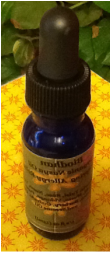Spring, in particular, is the season where kapha dosha gets vitiated.It's easy to see kapha's elements—earth and water—in your surroundings, as snow melts, streams swell, and soil becomes heavy with moisture.Kapha's heavy, cold, and viscous qualities naturally tend to dampen, rather than kindle, the digestive fire, inviting the ama/ allergy process to develop.As the digestive fire is weak, mucus kapha toxins accumulate.
Kapha overflows into its seat in the lungs and respiratory system, flooding out of the nose and lungs. The reason this type of hayfever occurs early in the spring is that, as the warmth of spring increases, it causes the kapha built up over the winter to melt. Like spring floods, the rivers burst their banks, and excess mucus flows out of the body.
There may also be concurrent inflammation due to the irritation of the invading allergen causing pitta to accumulate in the blood stream and then overflow at the kapha sites.A Kapha allergy, on the other hand, may induce a dull heavy feeling in the head, stuffy nose and sinuses, lethargy and drowsiness, swollen eyes and lots of mucous production. Damp related allergens like moulds can set off this type of allergy and even cause asthma in susceptible victims.
Kapha Allergy Symptoms
In Ayurveda, the typical allergy symptoms in the spring season – congestion, runny nose, watery eyes, and sneezing – are
described as an accumulation of the Kapha dosha, which is made up of earth and water elements. This leads to the feeling of “heaviness” and excessive mucus in the head and sinuses. Other symptoms are sluggishness and feeling tired. For the
classic Kapha-type allergy symptoms, there are several simple and effective therapies that will relieve acute symptoms.
Kapha signs: Sinus congestion, watery eyes, copious mucus, itchy nose.
Promotes awareness and concentration
Indications:
Sinus congestion, dryness of the nasal passages, stiffness in the neck and shoulders, headaches, hoarseness, mental lethargy
Possible Contraindications:
Not for use by pregnant women immediately before or after eating, intoxication, or acute fever.
About Nasya:
As said in Sanskrit ' Nasa Hi Shiraso dvaram' Nasal passage is door to head cavity, lubricating nasal passage with Nasya oil helps bring calmness.
The nose is the direct route to the brain and also the doorway to consciousness. It is the entrance for prana, the
life force, which comes into the body through the breath. Healthy uncongested breathing is important to ensure proper flow of prana
throughout the head and body. Nasya Oil soothes and protects the
nasal passages and helps
relieve sinus congestion. Daily nasal
lubrication helps to release
tension in the head and relieve
accumulated stress. Nasya Oil is also
traditionally said to improve
quality of voice, strengthen vision and
promote mental
clarity.
When
Vata is out of balance, the allergic symptoms include headache, wheezing,
sneezing, and generalized muscle aches. These may be seen more typically
in the fall as the air becomes cold and dry. This is due to the
accumulation of the
lighter elements of space and air in the
mind-body physiology. Other manifestations of this Vata imbalance include
dry cough, restlessness, and dry eyes.
1. Comfortably lie
down on
your back and tilting your head back with your nostrils
opening towards
the sky. If you are lying on a bed, you may hang your
head off the edge of
the bed, or place a small pillow beneath your
neck for
support.
2. Place 2-3 drops
of nasya oil in each nostril.
3. Take few sniffs in,
then
rest for a few minutes allowing the nasya to
penetrate.
This is a very useful method when lying down is not always convenient or while doing on kids
1. Place a drop of nasya oil on the little finger and gently insert it into the nostril.
2. Gently massage the outer side of nose by pressing it.
3. Do both left and right nostrils
Ingredients:
Tulsi,,Turmeric, Rose, Neem, Vacha, Bibhitaki, Musta, Vidanga, Punarnava, Manjishta, Barbery, Guduchi, Licorice and Sesame oil.
http://www.chopra.com/ccl/an-ayurvedic-approach-to-seasonal-allergies/#
These statements have not been evaluated by the Food and Drug Administration.These products are not intended to diagnose, treat, cure or prevent any disease.Recommend this Website to a Friend

